Last Updated on July 14, 2023
Eco camping is something that seems like it should come naturally. So I find it odd that camping has been one of the most difficult activities to create zero waste. It’s strange that living in the great outdoors is often coupled with a lot of trash and single-use-plastics. Doesn’t that seem backwards?
With these tips, it doesn’t have to be hard to go camping the eco friendly way! From gear to snacks, this sustainable camping gear has everything covered. Eco friendly camping takes just a little bit of planning and foresight, but makes spending time in nature even more rewarding. I’ve done all the homework for you so zero waste camping will be a breeze for you.
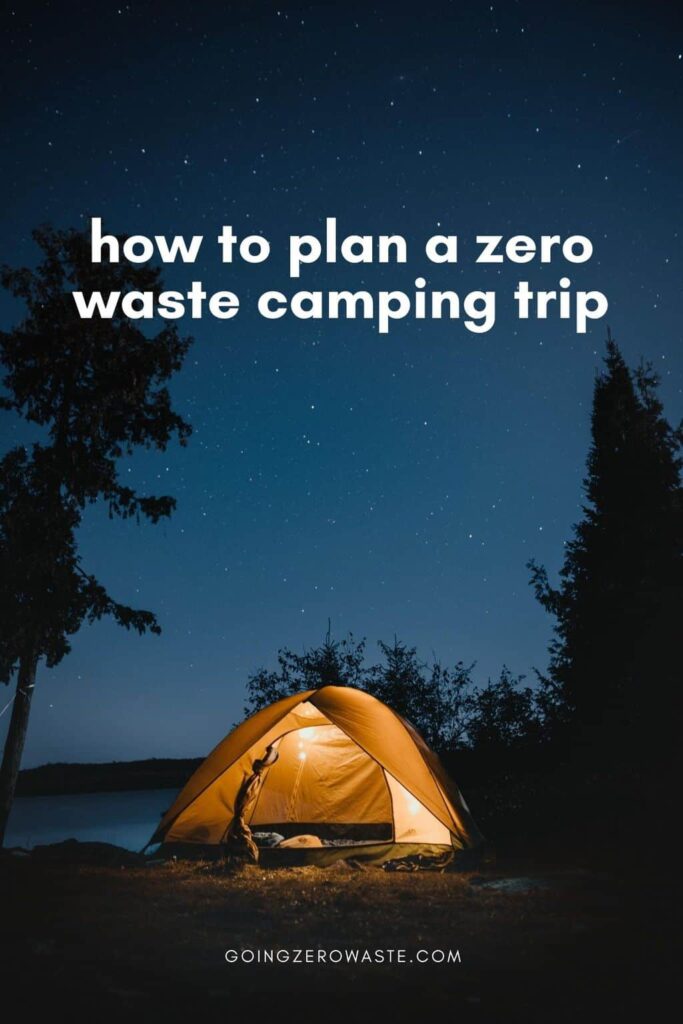
Table of Contents
eco camping
Justin and I recently went on a camping trip, and it was my very first one! Well, it’s the first one that I can remember. I went on a trip with my parents when I was three, so that doesn’t really count.
I don’t remember that trip at all so I had a huge learning curve. Justin, on the other hand, camped often before we met.
But, I’m going to guess his style of camping looked a lot like the small group we saw leaving the campground with five full trash bags — yikes!
Just kidding, I’m sure he wasn’t that bad.
Justin and I hadn’t gone camping before because you need quite a bit of gear, and we didn’t really have any. I didn’t want to shell out a bunch of money if I wasn’t sure I was even going to like camping.
Thankfully, I LOVED it. We bought a few things but were able to borrow the majority of our supplies from friends and family.
I bought a 2-gallon water jug with a spigot from the thrift store and a new leash for Nala.
We got the leash from WilderDog. Their leashes are made from upcycled mountain climbing ropes, they have a lifetime warranty, and they donate a bag of food to a shelter for every purchase. Plus, they’re made in NorCal. Yay, for supporting local businesses!
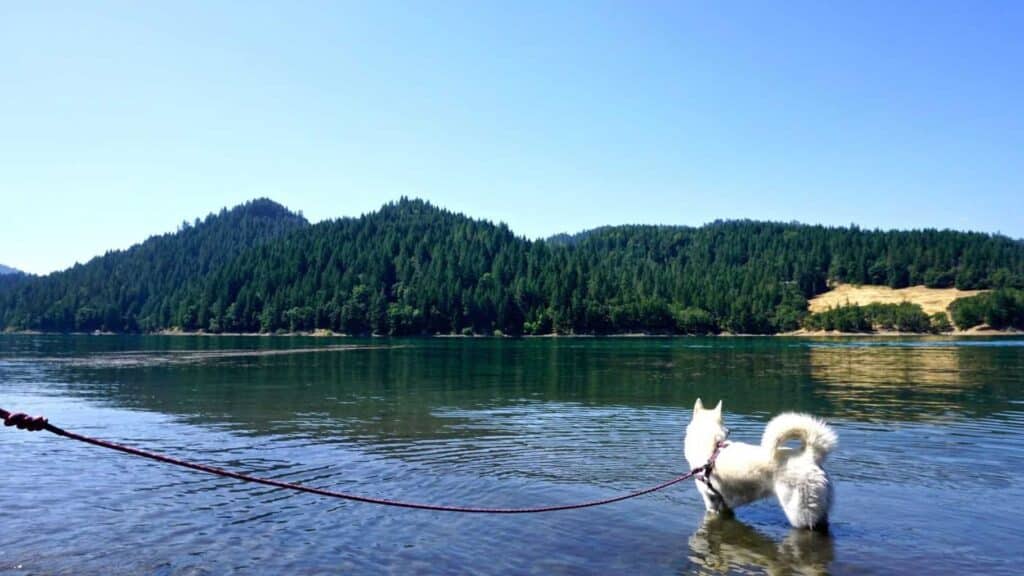
eco friendly camping tip
Borrow what you can instead of buying new for a truly zero waste camping experience! You can always buy your equipment later if you know you’re going to use it for a long time.
As for the rest of the gear, the bookkeeper at my work had a whole bunch of camping stuff she doesn’t use anymore, and she just gave it to me.
Another co-worker of mine goes camping all the time, and he was able to fill in the gaps with what we were missing.
Never underestimate asking your friends! You’d be surprised with what they have and are willing to let you borrow — just as long as you bring it back in better condition than you got it!
And, throwing in some cookies or taking them out to get a beer or coffee as a thank you is definitely encouraged. Let’s grow this sharing economy, people!
sustainable camping gear
As mentioned above, we borrowed much of our gear. And while tents and camp chairs are made out of polyester and vinyl — which both contain plastic — having high-quality items that are long-lasting help make up for that.
Plus, we didn’t purchase much of our plastic gear, keeping new plastic out of the market. The gear we brought with us included:
(1) 8 Person Tent: I know what you’re thinking, no one needs an 8 person tent. But, let me tell you, it was awesome. I am so glad we had it. It was super easy to set up and fit two people and a dog nicely.
Living out of a suitcase can be super messy. So the extra space allowed for some semblance of organization.
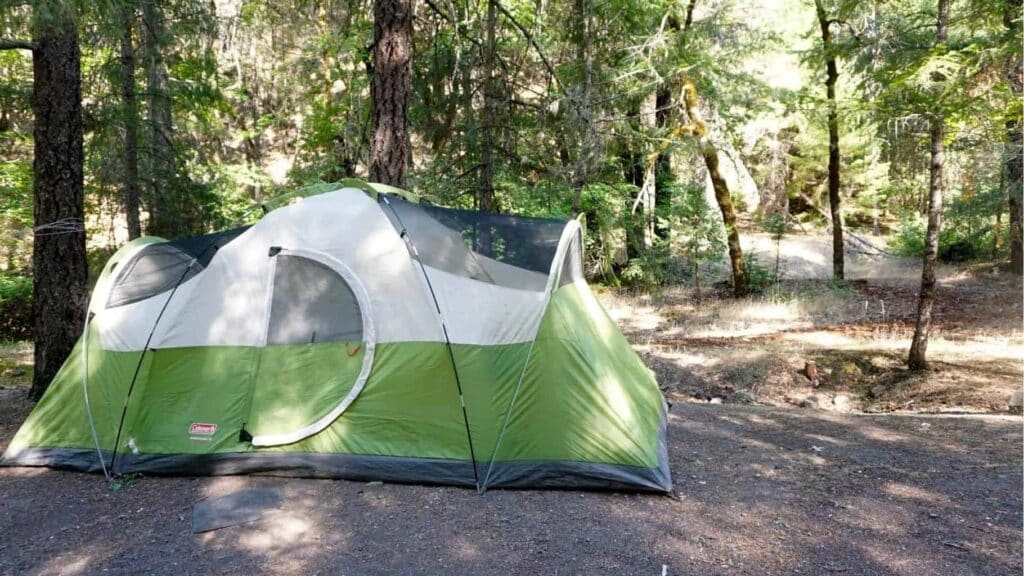
I’ve had the tent for several years. Justin and I had planned a camping trip when we first met but never went until this year.
(1) Queen Size Air Mattress: We probably would have used sleeping bags if owned them, but we don’t… so we didn’t. Instead, we were being extra-luxurious!
We brought our queen-sized air mattress with a set of sheets. This is the same set we use when guests visit, but it wound up being perfect for camping!
Can we still call it camping if we’re sleeping on an air mattress? I’m not sure about the qualifications on that.
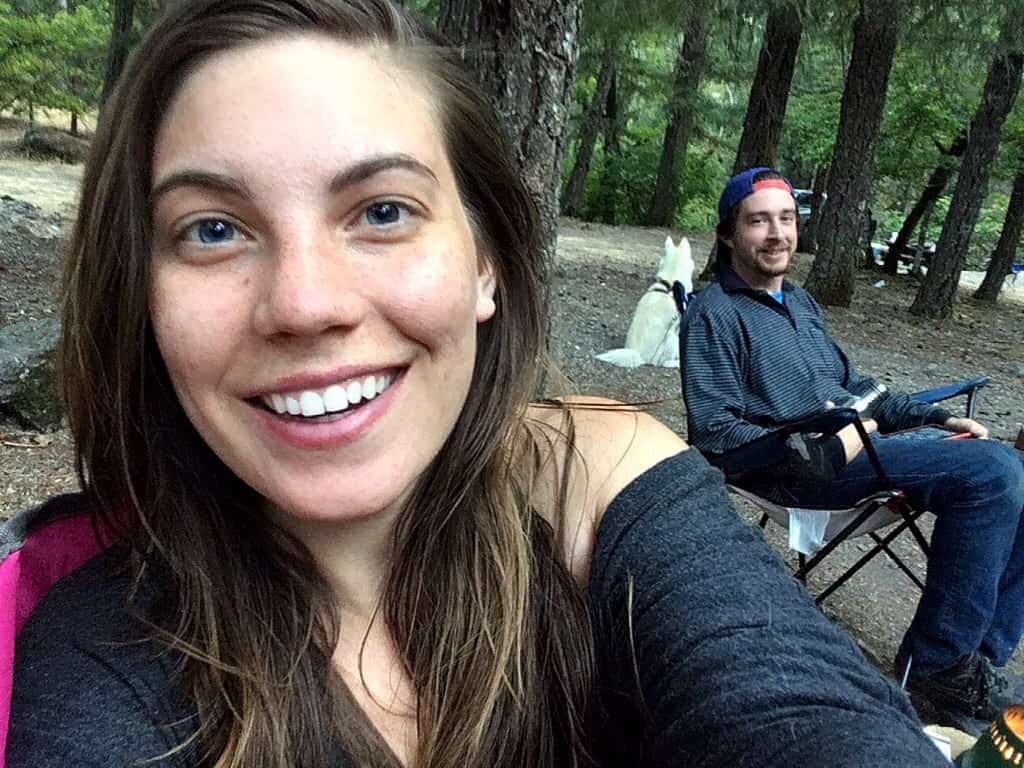
(1) Hammock: This was for Nala. We bought a hammock at Costco during our first year in CA. We kept it in the backyard, where it eventually became Nala’s favorite spot, so we brought it for her to lounge.
(2) Folding Chairs: We are so fortunate that a coworker let us borrow two very nice folding chairs — with cup holders!
(1) Stove Top: We were lucky enough to borrow a stovetop from one of my coworkers, but our campsite had a fire pit with a cooking grate as well.
I really enjoyed cooking over the open flames, but it was nice that we had the option of using the stovetop so we didn’t have to light a fire for breakfast.
To reduce single use plastics and keep our camping eco friendly, we brought one of our cast iron skillets with a lid, a wooden spatula, three plates, and 2 sets of silverware.
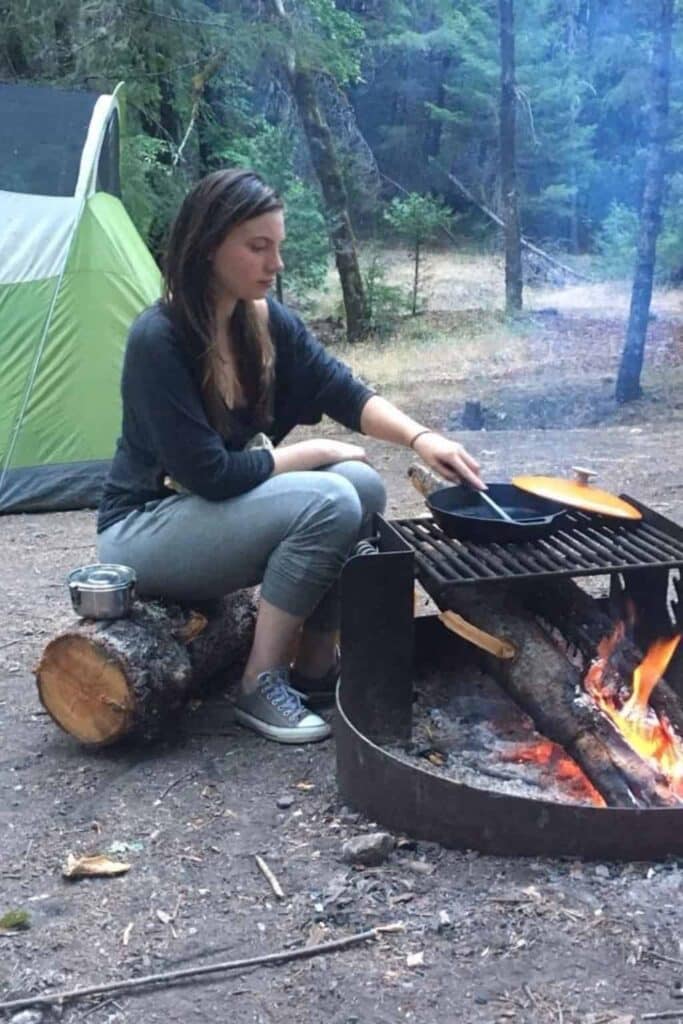
(1) Cooler: We also got this from a coworker. And, I did not do well at coolering (more on that later).
(2) Lanterns: We got some really cool vintage lanterns from one of my co-workers.
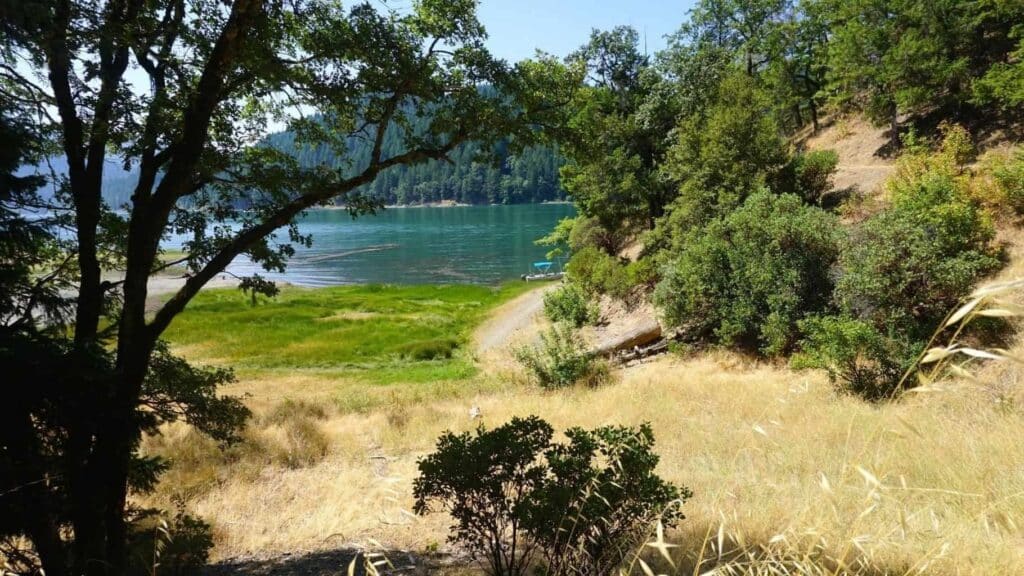
(1) 2 Gallon Water Jug: This was the only item I purchased specifically for the camping trip. And, it was a total lifesaver. We filled it with water before bed and put a charcoal filtering stick inside to filter it. Then we used it like our own personal faucet! I got it at the thrift store for $5. Woot, woot!
Our sustainable camping site was not one that produced dozens upon dozens of single use plastic bottles.
camping the eco way
toiletries:
This was awesome. We kept it super minimal. You can read more about it in this blog post. I was very happy with my sunscreen, an average SPF of 30, and bug spray. I came away with three bites. Two on my neck and one on my face.
I would never spray regular bug spray on my face, but with what I made, I’d feel totally comfortable. Note to self: Apply to face next time.
I did get one ant bite on my foot. But, after four days in the woods — I’m pretty happy with those results.

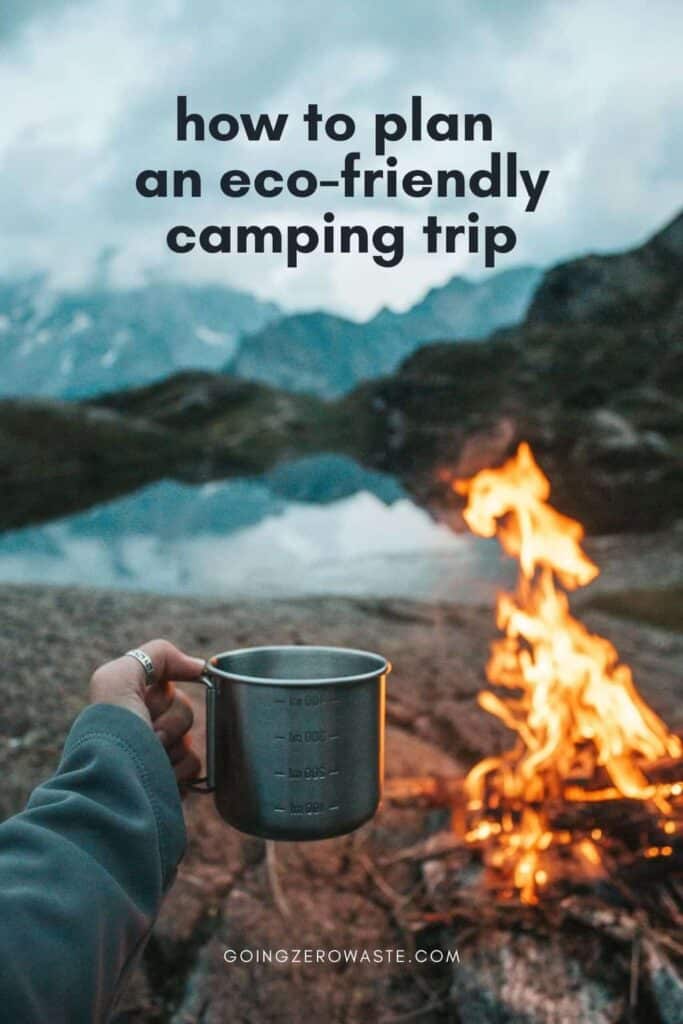
clothing:
I was a little over prepared. But, I did well for my first time, I think. Now I have a better idea of what I truly need for my next eco camping trip. I had hiking boots and flip flops. I wore my flip flops traveling and just in case I decided to jump into the lake. Which I didn’t.
restaurants:
We ate out twice on the road. After trying 4-5 places, we finally found a place that would let us sit outside with a dog! We’re in CA. I thought all outdoor seating was dog friendly, but we really struggled to find a spot.
Thankfully, we settled on an awesome little diner with an amazing veggie burger and chocolate cake — on real plates!
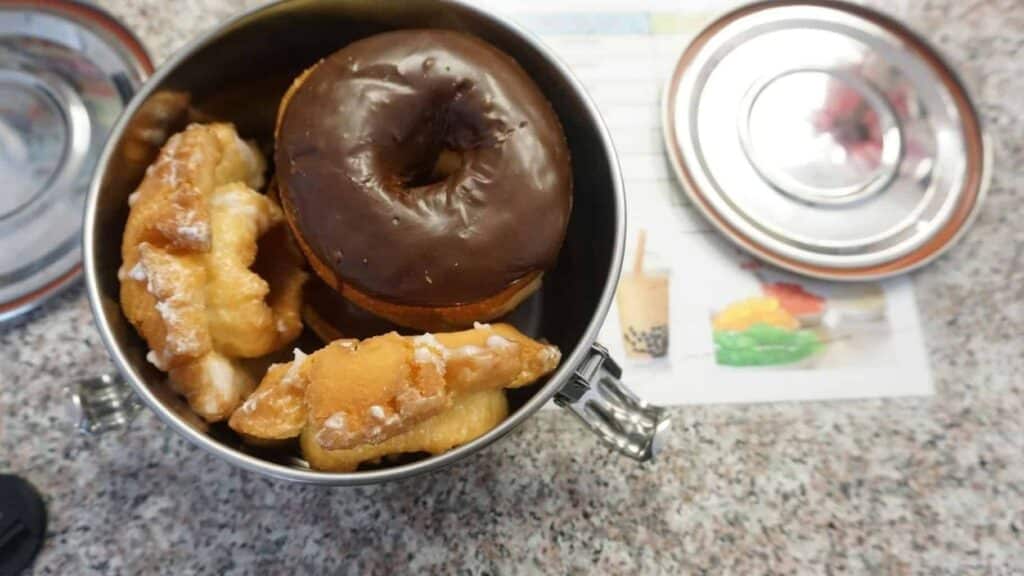
And, we also got donuts. YUM. They were totally cool with placing them right in my tiffin.
While at the donut shop, we needed to fill up our water bottles. I noticed they didn’t have a soda fountain, so I asked if they had any water where I could refill my Klean Kanteen.
In the middle of the refrigerator case next to all the bottled water, there was a large pitcher of filtered water. SCORE. Sometimes you just have to ask.
our sustainable camping mistakes
ice:
In Arkansas, we have tons of little drive through ice stations where ice just falls out of a chute. We were not so fortunate here.
We got a couple of plastic bags of ice for the cooler. For a truly eco friendly camping trip, I wish I hadn’t had to buy plastic bags. But this is the way it goes sometimes! We just do the best we can.
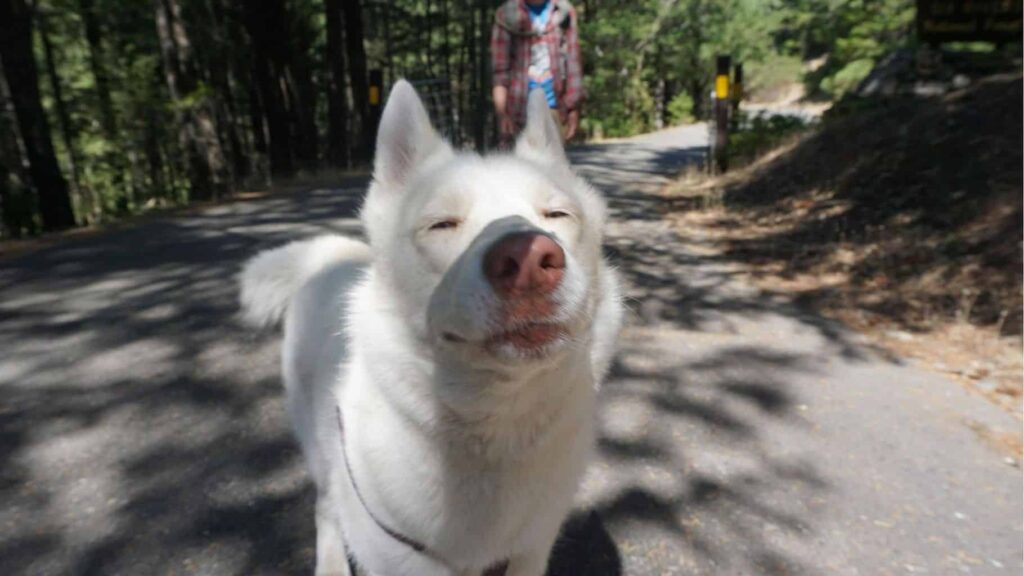
cooler:
I didn’t want to bring a lot of glass on the camping trip. So we packed things in open stainless steel bowls and my tiffins. But, the tiffins weren’t watertight in the cooler.
As the ice melted we were left with a lot of soggy food. Which we ate — because zero waste eco camping! But, I will definitely do things differently in the future.
We also brought way too much food. Before we left, Justin opened the fridge and just kept throwing more stuff in the cooler…. lesson learned.
camping treats
beer:
In trying to avoid glass, we left the growlers at home. Also, it doesn’t seem super practical to bring a growler or two on a camping trip. So, we bought some cans which we recycled!
Surprisingly, there was no recycling available at the campsite. We made sure to bring them home and recycle them.
s’mores:
If you’ve ever read an interview I’ve done, then you know the answer to this question. “What is the one thing you miss since Going Zero Waste?” And, my answer is always the same: s’mores.
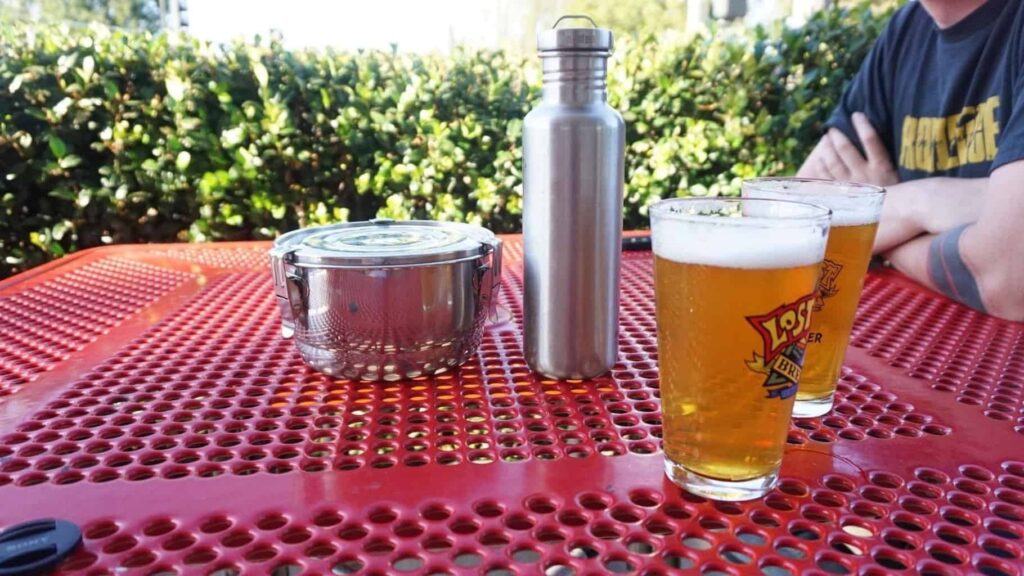
I love them. They’re the perfect treat. I’m all about the perfect bite. And, a s’more is definitely the perfect bite. They’re gooey, sweet, and crunchy — mmmmm! Beyond being the perfect campfire accoutrements, they’re also riddled with childhood nostalgia.
And, without any shame, I bought a bag of marshmallows, a couple of bars of chocolate, and some classic graham crackers. If I can get the plastic wrap clean, I will proudly place that in my trash jar.
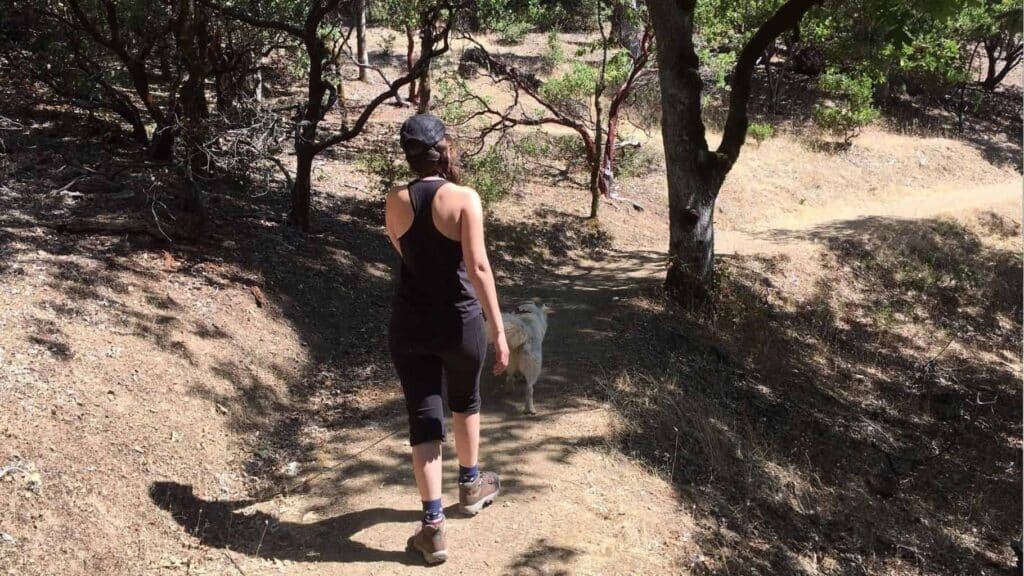
And, I’ll be honest with you… they weren’t as good as I remember. So, I’m probably set for the next couple of years on s’mores. But, it was totally worth it.
Life is about balance. What do you think?
All in all, I loved camping. I really enjoyed getting to relax and spend time in nature.
It was so rejuvenating, and I loved being completely tech free. I spent a lot of time reading, walking around, and doing a whole lot of nothing. It was amazing, and I can’t wait to go back.
faqs
why is eco friendly camping important?
Camping is an amazing way to unplug and spend time in nature — but what’s the point if you’re harming the environment in the process? By eco camping, you reduce pollution, keep the water clean, reduce single use plastic waste, and overall take care of mother nature so she’ll still be around for future generations to enjoy.
how do you find a way to actually enjoy camping?
Find your camping style! I didn’t think I would enjoy sleeping on the hard ground. And while I didn’t have to choose that due to the lack of sleeping bags, I found that I enjoyed sleeping on the air mattress. And let’s face it, taking an air mattress is not many peoples’ idea of ‘eco camping.’
It’s ok to change what ‘camping’ looks like to your friends and family and make changes that suit your tastes. Extra bonus points if those changes also have a positive impact on the environment!
Have you gone camping?


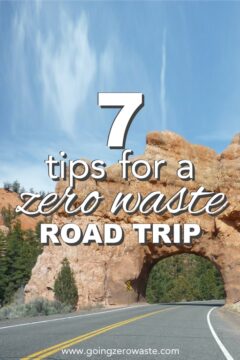
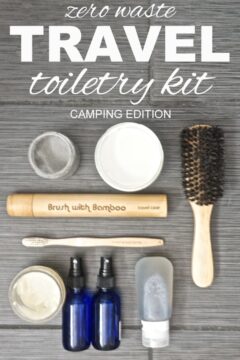
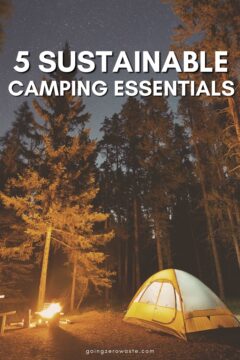
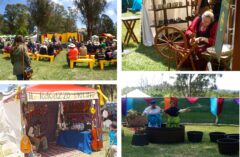








Great post, as a seasoned camper it’s really interesting to hear an account of a first timer, especially from a zero waste perspective. I think you are so right too, I find camping one of the most difficult activities in relation to waste.
I can’t drive (you don’t get taught in school in the UK, and I’ve never had £1000 to spend on lessons…) so besides a recent road trip to Scotland where we went in my boyfriend’s car, I’ve always camped by carrying my gear on my bike or in a backpack. If you ever get the chance or feel that way inclined I would highly recommend it as it’s a great exercise in minimalism! We’re going cycle touring around Northern France in a week, and my packing list is considerably less than when we went touring last year, it makes you strongly question the need for every single item. But it also makes zero waste quite difficult as unfortauntely plastic becomes your best friend in terms of weight, waterproofing and durability. You can of course reuse plastic bags and containers, but I think that camping becomes synonymous with disposables to many people, which it doesn’t have to at all, but I think that’s why some people end up creating so much rubbish when they camp.
It’s also interesting to see what different people consider camping essentials. For me, I take an inflatable mattress whenever I get the chance, and have a lightweight self inflating sleeping mat for when a mattress isn’t an option. The mat was expensive but VERY worth the investment, especially after a long day of cycling or hiking when you don’t want to be sleeping on the bumpy ground. But taking a camping chair never crosses my mind, as the weight isn’t worth it when I can sit on a blanket (although saying that, this year’s Glastonbury festival was the muddiest I’ve been to and I did nearly buy one whilst I was there!).
Glad you enjoyed it though and want to go back, camping is so wonderful, especially once you learn how to navigate it’s unique problems!
We were lounging more than exercising. That is for sure! Yes, I was thinking about how difficult it would be to carry all of our gear with us. It totally would have changed the game!
I super appreciate your insight! Makes me want to go and try camping again right now. 🙂
Thanks for the post and the lovely photos. The area looks like a great place and you seem to have had good weather – which is important if you want to enjoy the camping trip. I have had some, where I sat in my tent in the rain hoping the water wouldn’t wash away the tent of flood the ground. Pretty hopeless for relaxing; boring, too.
I have never tried reducing waste when I camped, so I cannot tell you about that. Like Jade, though, I have always tried to keep everything very light and have one of each only, i.e. one aluminum cup per person, one set of camping durable plastic cutlery with spoon, one plate each, a set of cooking pots on a little rack that was fired by some liquid on a small reusable can. I have had the chairs for 20 years now and they are the most comfortable ones we own. We always keep one in the trunk of the car (I have problems with my back currently) when we go on a bike tour. While my husband loads/unloads the bikes, I sit and watch. We use them in the garden as garden chairs, too. I recommend getting comfy ones, not necessarily expensive ones. A good sleeping bag is a good investment, too. I prefer down but if you are vegetarian you may want to go for synthetic ones. Down is fluffy and warms within a second while the synthetic ones need body heat to warm you. We keep the sleeping bags for visitors, too. We’ve had one bag each for about 20 years or so. To keep them clean I have used a fleece inlet, which can be washed very easily and has lasted 20 years without any visible wear.
Food: Germany is heavily populated so there’s always a store or restaurant close by. Buy fresh, cook, or bring dry stuff such as rice and pasta with dried veggies and nuts. Drink tap water (as you did) or bring bottled water in glass, which is re-used many times for the same type of drink in my country. (returnable bottles for which we pay a small deposit)
The only thing I am unhappy about when camping is toilet paper and burying it. Which is probably the reason I don’t go camping any more. That and the hard mattresses/no mattresses which hurt my back.
Thanks for the post!
We love camping but I have to say that camping in the UK is far colder and wetter than California (husband and I studied there years ago and have happy camping memories). We managed three days last week before coming home due to wind,rain and a leaking tent in SouthWest England 🙁 With three kids it is a real struggle to go waste and plastic free when camping, and something I am challenged by every time we camp. As a plus, though, the sites we stay at in the UK and mainland Europe tend to have good recycling facilities. I think it’s great you were able to borrow so many camping items – I think people who camp are always happy to share their tips and resources. Hope it’s the first of many happy trips…
I loved reading this! I often go camping and it’s surprisingly hard to keep it low waste. Ice is always a big issue, and also estimating food, we also took too much food when we last camped. I totally agree with you about balance, it can be really difficult always denying yourself items. I go hiking a lot too, but have only kept it to 2 days hikes since making the zero waste switch. I think backpacking (we call it tramping in NZ) is slightly easier than camping as you are always on the move so can’t take cold food items anyway.
I assume this gear was for "car camping," right? There’s no way you could carry all of that to a remote site that requires hiking in! Backpacking basically mandates a zero waste lifestyle because you have to carry out all of your own trash, so you learn to live as minimal as possible very quickly.
If you go camping again you can get reusable ice packs for the cooler. I just used some of those for a full weekend camping trip and they kept everything perfectly cold, and the packs stayed partially frozen.
I know this is kind of late to comment, but an option for ice is getting it from a church. That’s what my family does. Most churches have ice makers, and don’t mind you taking a cooler, or two’s worth. Both my grandma, and sister have a key to our church so we just stop by, and fill up the coolers. The only thing you have to be careful of is taking a lot right before funerals, church dinners, or weddings. I’m not sure all churches would have the same attitude, but it never hurts to ask. The ladies in our church don’t like the idea of ice sitting in the machine, and they offer free ice to anyone that they know who is doing some kind of event. Last year one of my dad’s friends managed a concert at a park, and we took him ice from the church.
Of course this is not ideal, and it is always better to avoid plastics altogether, but in Australia there is a company called REDCycle which allows you to recycle any soft plastics such as confectionary bags, and plastic bags at your local supermarket. The plastic gets turned into things like furniture for schools. This might be a good option for your marshmallow bag if something similar exists in the US!
I love this! I am planning a camping trip this summer with my pup through California. 40 days, 20 campsites! My pup is also named Nala! (But mine is a German Sheppard mix. So sadly much less fluffy.) I am going to try and make it as vegan and waste free as possible and this blog post was AWESOME! Thank you so much for sharing! It’s getting me so excited for the trip!
Can you please report back how you end up doing this waste free and vegan? I’d be very curious to know!
This sounds like an awesome trip! Good luck! 😀
To avoid buying bags of ice, we use old plastic milk/juice cartons. We fill them up with water, leaving some room at the top, and freeze in the freezer. As long as we are careful about leaving space at the top, we can continue to reuse them. I know they are plastic but they stay cooler longer and are reusable. Plus the water does not leak throughout your cooler, keeping your food dry.
That’s a great idea!!
Fantastic post! Looking forward to testing out my ZW camping skills this next weekend! And thank you for your point about returning borrowed items in better condition than you got them. I love the sharing economy but have been super irritated over the last few years by lending out my camping gear and having it ruined or damaged by inconsiderate friends. One even gave back my tent two months after camping completely covered in mold. ? So thank you for the gentle reminder.
I know you said you were trying not to bring glass, but we’ve had lots of luck bringing mason jars in our cooler. The mason jars are waterproof, and they work really well for packing ingredients in, storing them, and holding the leftovers while they’re being reheated (I heat a pot of water, stick the mason jar in — sans lid — and then use the jar to eat out of. Then the hot water is good for washing up.)
I’m so glad you had a good time, and I love the idea of bringing a hammock for the dog!
I have done a lot of camping and am about to take my girls backpacking. My biggest challenge for backpacking is how to replace the ziplock back. It’s so easy to portion off all the various food items, and obviously, you can’t backpack with a load of glass jars. Any zero waste replacements for the ziplock? I also find I use that for storing food in the freezer. I literally store a year’s worth of blueberries in the freezer in ziplock bags. I would love support for how to go ziplock free!!
Blue Avocado Reusable bags on Amazon
Hi there! I also LOVE camping, but I’m wondering if anyone has found a zero-waste "tinfoil dinner" replacement?
Yea sounds awesome!love it:) thanks for sharing
Nice post, thank you. For the ice you can use hard icepacks for coolers, maybe you can find some 2nd hand. I don’t know however how long do they last.